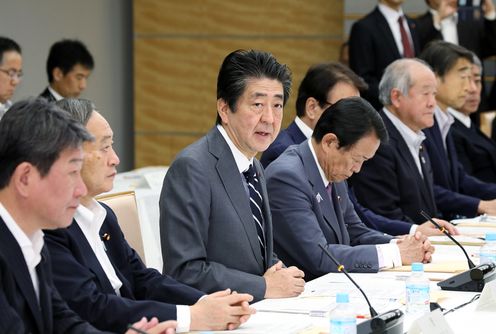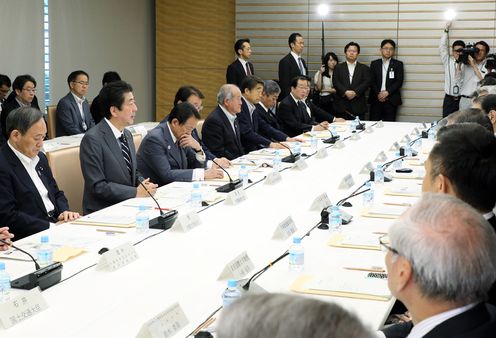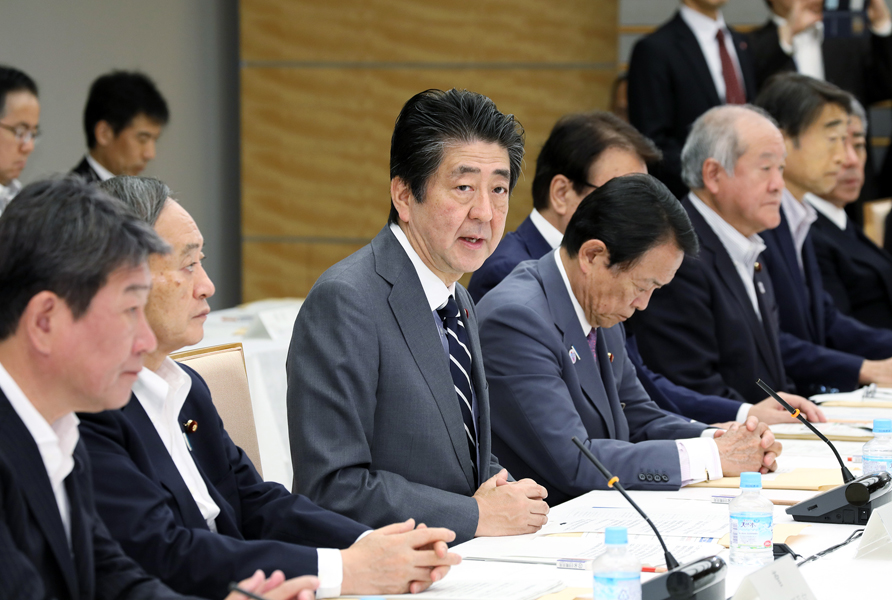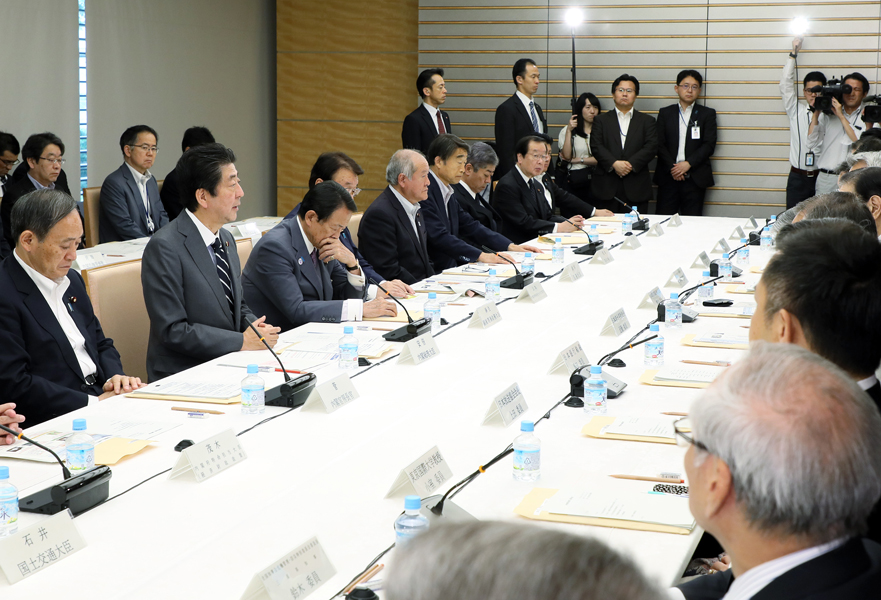Home > News > The Prime Minister in Action > May 2019 > Council for Central Disaster Management
The Prime Minister in Action
Council for Central Disaster Management
May 31, 2019

Photograph of the Prime Minister making a statement (1)

Photograph of the Prime Minister making a statement (2)
[Provisional Translation]
On May 31, 2018, Prime Minister Shinzo Abe held the 39th Council for Central Disaster Management at the Prime Minister’s Office.
During the meeting, approvals were given on the revision of the Basic Disaster Management Plan and the changes to the Nankai Trough Earthquake Countermeasures Basic Plan, as well as the FY2019 Comprehensive Drills for Disaster Management and the promotion of earthquake research.
Based on the approvals at the meeting, the Prime Minister said,
“I express my appreciation to you for your attendance to the very first meeting in the Reiwa era of the Council for Central Disaster Management so early in the morning, despite your busy schedule.
Last year, large-scale natural disasters took place in succession such as the heavy rain in western Japan, which will have its first anniversary in July, the Hokkaido Eastern Iburi Earthquake, and a series of large-scale typhoons.
It is our responsibility and mission to reduce the number of future victims as much as possible, by fully utilizing our lessons learned in disaster management from now on, following the tremendous loss. To that end, on this occasion of the revision of the Basic Disaster management Plan, we have incorporated various measures into it based on the lessons from the disasters including the heavy rains in western Japan. These include the thorough public awareness on the self-protection of one’s own life, the promotion of understanding of evacuation actions to be taken, and the provision of 5-warning-scale disaster-related information, which is easy to comprehend.
In addition, we have made changes to the Nankai Trough Earthquake Countermeasures Basic Plan, and incorporated various elements including measures to be taken in cases when it is decided the likelihood of a Nankai Trough earthquake becomes relatively high. Furthermore, with respect to the Information Support Team, which the Cabinet Office put into full-scale operations from this fiscal year, we would like to ensure that the team will continue to operate with close collaboration with local governments under the support from the relevant ministries and agencies.
I ask each minister to steadily advance the further enhancement and strengthening of disaster management and mitigation measures, based on today’s decisions. In particular, we have established an information liaison office in the Prime Minister’s Office on May 20, earlier than usual, to prepare for the forthcoming rainy season and typhoon season. I would like to ask you to work on disaster responses, being fully prepared, with a sense of urgency.
The Government intends to continue to advance a comprehensive disaster management measure, which integrates both hard and soft aspects appropriately, with the public and private sectors working as one. I ask the members of this Council for your further understanding and cooperation.”


